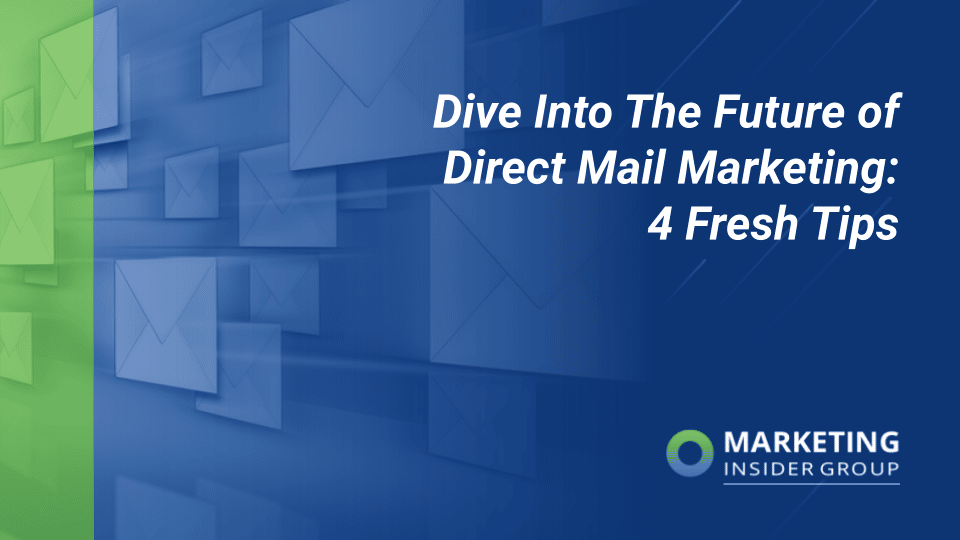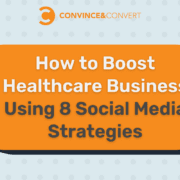Dive Into the Future of Direct Mail Marketing: 4 Fresh Tips

Direct mail is one of the most classic and effective marketing tools nonprofits can leverage for fundraising. However, determining how it fits into your strategy can be quite a marketing challenge.
By utilizing technology to support direct mail marketing campaigns, nonprofits are able to maximize their reach and increase their ROI. In other words, when you’re able to tailor your messaging and donor lists to those who are most responsive to direct mail, you’ll be able to strengthen your nonprofit outreach efforts, build better relationships with your supporters, and secure donations.
According to Meyer Partners nonprofit marketing guide, there are four tips to keep your direct mail marketing fresh and lucrative. Let’s take a close look!
1. Segment Your Donors
Carefully selecting recipients can help cut costs for the campaign and ensure you’re sending the right messages to the right people. Use your donor database to select current and previous donors who would be most likely to give. Look for things such as:
- How recently has the donor contributed?
- Has the donor given multiple gifts, or only one gift?
- What are key constituencies within your file (alumni? grateful patients? etc.)
Donors who have been responsive to direct mail in the past or those who donate via mail are an obvious donor segment to choose, but also look for recurring donors within those segments that you have the potential to upsell.
Past giving trends are the key predictor of future giving. Today, predictive modeling is available to harness the power of artificial intelligence to look at each and every past contribution—helping you meet your goals for net revenue as well as donor retention. Use your donor data to refine your messaging and mailing lists for a greater ROI.
2. Personalize Your Appeals
Generous donors typically receive mail from multiple organizations. Be sure to tailor messages appropriately for key constituency segments to maximize the impact of your appeals. Use data related to their past engagement to help make your communications more relevant.
Here are some pieces of information to include for personalizing direct mail:
- First and last name
- Previous donation amount(s)
- How many times they have donated
- Past volunteer experiences
As feasible, add handwritten notes to underscore your personal relationship with, and appreciation of, the donor. You will need to weigh how many notes can be added on a timely basis, but perhaps your CEO and major gift officers can add handwritten notes for donors in their portfolios. You want donors to feel special and remind them that their individual contribution has a large impact.
3. Don’t Forget the Call-to-Action
What’s the next step the donor can take to further their engagement with your cause? Here are some simple ways to guide donors to the next step when sending appeals:
- Don’t forget to ask for the gift! All too often, donors receive letters which presumably were intended to be appeals, but have no ask! Asking for the gift is both straightforward and also something of an art. When writing, keep in mind a genuine respect for the donor, and you’ll do fine. Just don’t forget to ask.
- Include a pre-addressed reply envelope. Help donors more easily send in their donations.
- Provide a URL and/or a QR code to direct supporters to your giving page.
You can include additional information about your nonprofit like your website address, social media accounts, or upcoming event dates, but your focus should be a singular call-to-action. So remember to make that call-to-action stand out.
4. Don’t Stop with the Appeal
Beyond sending appeals, it’s very important to promptly thank donors and inform them of the impact of their giving.
Here are some types of messages to include in your communications plan:
- Donor appreciation. A simple thank-you can go a long way when it comes to stewarding donor engagement. Be creative with thank-you messages that stand out so donors are happily surprised and know their contributions are making an impact.
- Annual reports. Keep donors informed by sending your annual report or a summary highlighting your accomplishments. Donors will feel involved in your work when they understand how donations create change through your organization.
- Volunteer requests. It may be appropriate for you to encourage further involvement with requests for volunteers. Offer donors the opportunity to get hands-on experience and do more for your nonprofit by sending a calendar with volunteer dates and a URL to your volunteer sign-up page.
At the close of your direct mail content, it’s helpful to include upcoming event dates and times. While this information shouldn’t take away from your call-to-action, it can get supporters energized and excited to participate.
When you’re deciding what your next direct mail campaign should be, consider what your short- and long-term goals are. If you’re nearing the year-end giving season, sending annual reports and donation requests can be most helpful. If your campaign falls near a holiday or will culminate in a big event, volunteer requests could be useful. Be sure to personalize the messages for each supporter segment to maximize the impact of your campaign.
Direct mail plays a huge role in acquiring donors, keeping them engaged, and raising net revenue. The key is to use the available tools available like predictive modeling, file segmentation, personalization, etc. to maximize results and raise more money for missions.
 Bonnie Meyer
Bonnie Meyer
Bonnie brings to her role at Meyer Partners more than 30 years of fundraising experience, with a special emphasis in multimedia approaches to new donor acquisition and development. Her expertise encompasses several facets of direct response fundraising, including copywriting and creative direction, market research, strategic planning, and comprehensive results analysis.
The post Dive Into the Future of Direct Mail Marketing: 4 Fresh Tips appeared first on Marketing Insider Group.
Did you miss our previous article…
https://www.sydneysocialmediaservices.com/?p=4051











